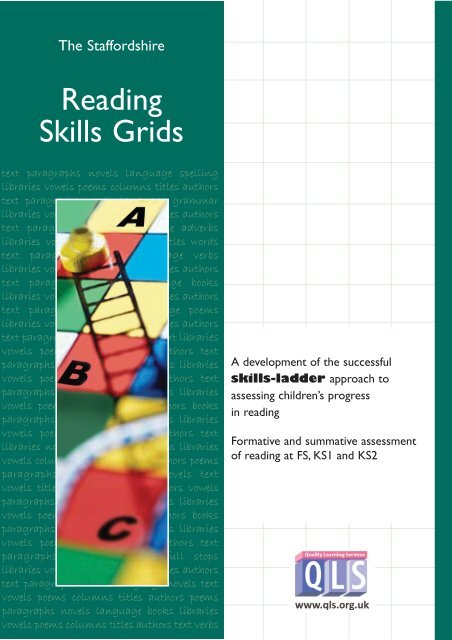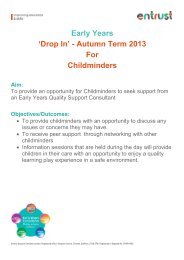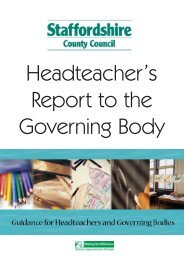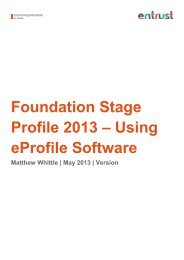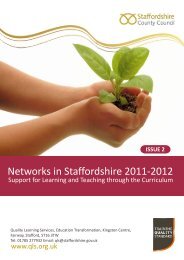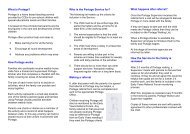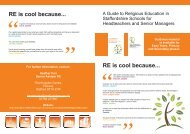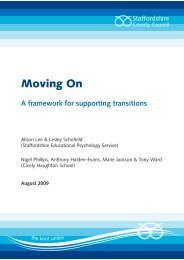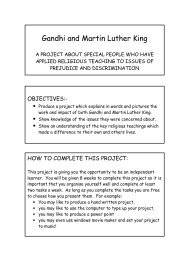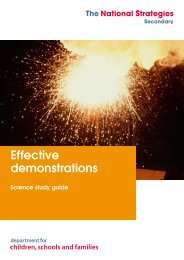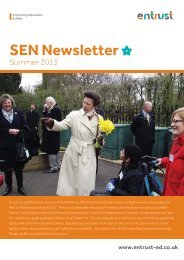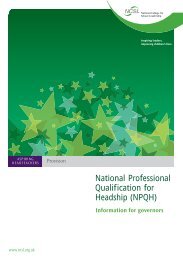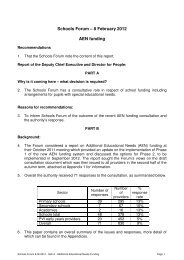Reading skills_save for pdf - Staffordshire Learning Net ...
Reading skills_save for pdf - Staffordshire Learning Net ...
Reading skills_save for pdf - Staffordshire Learning Net ...
Create successful ePaper yourself
Turn your PDF publications into a flip-book with our unique Google optimized e-Paper software.
grammar handwriting punctuation words<br />
full stops spelling capital letters question<br />
marks commas verbs adverbs grammar<br />
The Staf<strong>for</strong>dshire<br />
handwriting punctuation words full stops<br />
spelling capital letters question marks<br />
grammar handwriting punctuation words<br />
full stops spelling<br />
<strong>Reading</strong><br />
capital letters question<br />
marks commas verbs adverbs grammar<br />
handwriting punctuation words full stops<br />
Skills Grids<br />
spelling capital letters question marks<br />
grammar handwriting punctuation words<br />
grammar handwriting punctuation words<br />
text paragraphs novels language spelling<br />
libraries vowels poems columns titles authors<br />
text paragraphs novels language grammar<br />
libraries vowels poems columns titles authors<br />
text paragraphs novels language adverbs<br />
libraries vowels poems columns titles words<br />
text paragraphs novels language verbs<br />
libraries vowels poems columns titles authors<br />
text paragraphs novels language books<br />
libraries vowels poems columns titles authors<br />
text paragraphs novels language poems<br />
libraries vowels poems columns titles authors<br />
text paragraphs novels language text libraries<br />
vowels poems columns titles authors text<br />
paragraphs novels language vowels libraries<br />
vowels poems columns titles authors text<br />
paragraphs novels language books libraries<br />
vowels poems columns titles authors books<br />
paragraphs novels language books libraries<br />
vowels poems columns titles authors text<br />
libraries novels language full stops libraries<br />
vowels columns columns titles authors poems<br />
paragraphs novels language novels text<br />
vowels titless columns titles authors vowels<br />
paragraphs novels language books libraries<br />
vowels poems columns titles authors books<br />
paragraphs novels language books libraries<br />
vowels poems columns titles authors text<br />
paragraphs novels language full stops<br />
libraries vowels poems columns titles authors<br />
text paragraphs novels language novels text<br />
vowels poems columns titles authors poems<br />
paragraphs novels language books libraries<br />
vowels poems columns titles authors text verbs<br />
A development of the successful<br />
<strong>skills</strong>-ladder approach to<br />
assessing children’s progress<br />
in reading<br />
Formative and summative assessment<br />
of reading at FS, KS1 and KS2
CONTENTS<br />
SECTION 1 - PAGES 3-8<br />
INTRODUCTION<br />
The Staf<strong>for</strong>dshire <strong>Reading</strong> Skills Grids:<br />
General In<strong>for</strong>mation<br />
The Staf<strong>for</strong>dshire <strong>Reading</strong> Skills Grids: Introduction<br />
The Staf<strong>for</strong>dshire <strong>Reading</strong> Skills Grids: How to use<br />
SECTION 2 - PAGES 9-16<br />
THE STAFFORDSHIRE READING SKILLS GRIDS<br />
<strong>Reading</strong>: Foundation Stage: FSP Focus<br />
<strong>Reading</strong>: Levels 1 – 5<br />
<strong>Reading</strong>: P Levels Focus
The Staf<strong>for</strong>dshire <strong>Reading</strong> Skills Grids:<br />
General In<strong>for</strong>mation<br />
The Staf<strong>for</strong>dshire <strong>Reading</strong> Skills Grids:<br />
Introduction<br />
The Staf<strong>for</strong>dshire <strong>Reading</strong> Skills Grids:<br />
How to use
THE STAFFORDSHIRE READING SKILLS GRIDS -<br />
GENERAL INFORMATION<br />
The Staf<strong>for</strong>dshire <strong>Reading</strong> Skills Grids: General<br />
In<strong>for</strong>mation<br />
The Staf<strong>for</strong>dshire <strong>Reading</strong> Skills Grids is a companion<br />
document to the successful Staf<strong>for</strong>dshire Writing Skills<br />
Grids. The grids are a development of the successful<br />
<strong>Reading</strong> Skills Ladders, which have been used widely by<br />
schools throughout Staf<strong>for</strong>dshire and beyond, to assist<br />
teachers in analysing pupils’ reading and setting<br />
appropriate reading targets. They have been expanded<br />
to provide sub-levels <strong>for</strong> all National Curriculum levels<br />
and are fully aligned with both the process and<br />
materials of Assessing Pupils’ Progress (APP) in<br />
reading.<br />
The grids have been produced in collaboration with<br />
colleagues from the Bailiwick of Guernsey where they<br />
are being used in all primary schools <strong>for</strong> End of KS2<br />
teacher assessment of reading, which has replaced the<br />
use of KS2 SATs on the islands.<br />
The Staf<strong>for</strong>dshire <strong>Reading</strong> Skills Grids are<br />
intended to support teachers in making in<strong>for</strong>med and<br />
reliable teacher assessment judgements about their<br />
pupils’ reading and have been designed so that the<br />
same tool can be used effectively <strong>for</strong> both <strong>for</strong>mative<br />
and summative assessment.<br />
For <strong>for</strong>mative assessment:<br />
• As a diagnostic tool to identify pupils’ strengths<br />
and weaknesses in reading<br />
• To in<strong>for</strong>m ‘next steps’ in pupils’ reading journeys<br />
• To support teachers in identifying gaps in teaching<br />
and learning and adjust planning accordingly<br />
4<br />
For summative assessment:<br />
• To support teachers in assigning an overall<br />
National Curriculum level <strong>for</strong> reading <strong>for</strong><br />
statutory assessment at the end of KS1 and KS2<br />
and <strong>for</strong> optional recording of Teacher Assessment<br />
at the end of Y1, Y3, Y4 and Y5.<br />
• To increase teachers’ accuracy and consistency in<br />
levelling of reading, aligning their judgements <strong>for</strong><br />
periodic (termly) assessment of pupils’ progress<br />
and internal tracking with National Curriculum<br />
level descriptors.<br />
Who can benefit from the use of The<br />
Staf<strong>for</strong>dshire <strong>Reading</strong> Skills Grids?<br />
Pupils:<br />
• Receive clear, detailed feedback about where they<br />
have made progress and what they need to do to<br />
improve further.<br />
Parents:<br />
• Receive detailed reports on their children’s<br />
overall progress and specific in<strong>for</strong>mation about<br />
their particular strengths and weaknesses.<br />
Subject leaders:<br />
• Can identify patterns and trends across groups,<br />
classes, key stages or whole-school<br />
• Can use in<strong>for</strong>mation to identify curricular targets<br />
<strong>for</strong> reading<br />
• Can consider any specific actions which may be<br />
required to address identified areas of weakness.
INTRODUCTION TO THE STAFFORDSHIRE<br />
READING SKILLS GRIDS<br />
CONTENT OF GRIDS<br />
The content of the grids has been produced with<br />
reference to the following resources:<br />
• National Curriculum level descriptors <strong>for</strong><br />
reading - English AT2 (1999)<br />
• QCA Assessment Focuses <strong>for</strong> reading (2003)<br />
• QCA ‘Building a picture of what children can<br />
do…’ (2004)<br />
• Renewed Primary Framework (2006)<br />
• Assessing Pupils’ Progress in <strong>Reading</strong> - KS3<br />
(2006) & KS2 (2008)<br />
• PNS - Letters & Sounds (2007)<br />
• Early Years Foundation Stage document (2007)<br />
• Revised P scales <strong>for</strong> English, mathematics,<br />
science and ICT (2004)<br />
• Book Bands <strong>for</strong> Guided <strong>Reading</strong> – Bickler,<br />
Baker & Hobsbaum (2003)<br />
ORGANISATION OF THE GRIDS<br />
There are two different grids <strong>for</strong> use with reading<br />
which is below Level 1.<br />
<strong>Reading</strong>: Foundation Stage – FSP Focus<br />
The main grid (page 10) uses statements from the<br />
Early Years Foundation Stage document and is intended<br />
<strong>for</strong> use with Nursery/Reception age children.<br />
<strong>Reading</strong>: Working towards Level 1 - P Levels Focus<br />
A second grid (Appendix – page 16) uses statements<br />
from the ‘P levels’ and is intended <strong>for</strong> use with older<br />
pupils, particularly those with learning difficulties, who<br />
are working significantly below age-related<br />
expectations.<br />
EAL<br />
5<br />
Levels 1-5<br />
Each grid covers one NC level together with the<br />
preceding and following sub-level (e.g. Level 3 Focus<br />
covers the range from 2A- 4C).The different elements<br />
of reading are classified using the QCA Assessment<br />
Focuses <strong>for</strong> reading. The chart below shows the links<br />
between the Assessment Focuses and the reading<br />
strands from the Renewed Framework.<br />
Renewed Framework<br />
reading strands<br />
5. Word recognition:<br />
decoding (reading)<br />
7. Understanding and<br />
interpreting texts<br />
8. Engaging and responding<br />
to texts<br />
Renewed Framework<br />
reading strands<br />
The grids have been structured so that the Assessment<br />
Focuses appear in numerical order. Although the<br />
<strong>Reading</strong> Assessment Focuses are not hierarchical and<br />
they are all important <strong>for</strong> all readers, the guidance<br />
from QCA is that early readers (Levels 1-3) need to<br />
become confident with AF1, AF2 and AF3. For readers<br />
to progress to Level 4 and beyond they need to be<br />
secure with AF3 and to develop the more analytical<br />
and evaluative <strong>skills</strong> associated with AFs 4-7.<br />
For EAL pupils specific assessment criteria can be found in ‘Raising Achievement: The Assessment of pupils<br />
learning English as an additional language’ amended version available shortly from the Ethnic Minority<br />
Achievement Unit. Tel: 01785 278257<br />
AF1<br />
AF1, AF2, AF3, AF4<br />
and AF5<br />
All AFs – especially AF3,<br />
AF6 and AF7
THE STAFFORDSHIRE READING SKILLS GRIDS<br />
STATUTORY ASSESSMENT<br />
CRITERIA<br />
The exact wording of the National Curriculum level<br />
descriptors and the Foundation Stage Profile Points<br />
have been incorporated into these grids. In order that<br />
these statutory elements can be clearly identified, they<br />
have been highlighted in colour (FSP – pink and NC<br />
level descriptors – blue).<br />
NB Reminder - <strong>for</strong> Statutory End of KS1 Teacher<br />
Assessment, only Level 2 can be divided into sub-levels<br />
– 2C, 2B, 2A.<br />
SELECTING SUITABLE EVIDENCE<br />
For evidence to give a true indication of a child’s<br />
attainment or progress in reading, it needs to have<br />
been produced with a high degree of independence.<br />
In most on-going work teachers will provide<br />
considerable support with particular elements of<br />
reading. This does not mean that on-going classroom<br />
reading (e.g. shared and guided reading) cannot be<br />
used as part of the evidence <strong>for</strong> a level obtained by a<br />
child, but the degree of teacher support and scaffolding<br />
needs to be taken into account.<br />
6<br />
Suitable assessment evidence from on-going work may<br />
include:<br />
• <strong>Reading</strong> records (especially those where<br />
teachers’ comments relate specifically to<br />
teaching objectives and Assessment Focuses –<br />
See Staffs Guided <strong>Reading</strong> Records [revised] on<br />
www.education.staf<strong>for</strong>dshire.gov.uk/curriculum/<br />
themesandinitiatives/assessment/statutory/ks1<br />
• Observations of children’s reading in a range of<br />
contexts<br />
- reading aloud in different size groups<br />
- pairs, small groups, whole-class, whole-school<br />
- assemblies, presentations, etc<br />
- reading to obtain in<strong>for</strong>mation – evidence from all<br />
curriculum areas, including ICT<br />
- reading <strong>for</strong> pleasure – knowledge about children’s<br />
reading preferences and reading beyond the<br />
classroom<br />
- response to material read – discussion in shared and<br />
guided reading, and all curriculum areas, drama<br />
(e.g. role-play, hot-seating, etc)<br />
- range of reading – fiction, in<strong>for</strong>mation, ICT texts,<br />
magazines, etc<br />
• Written responses to reading – comprehension<br />
• Children’s reflections of their own reading<br />
• Written plans
HOW TO USE ‘THE STAFFORDSHIRE READING<br />
SKILLS GRIDS’<br />
<strong>Reading</strong> evidence<br />
Collect together full range of evidence from<br />
children’s on-going work<br />
1. Read evidence and identify approximate NC level of reading.<br />
2. Use appropriate Level Focus Grid to identify ‘best-fit’ sub-level.<br />
Remember –<br />
1. For each Assessment Focus highlight the criteria<br />
statements which have been met.<br />
2. Make a ‘best-fit’ overall level judgement.<br />
For ‘secure evidence’ several examples are needed. Don’t give ‘the benefit<br />
of the doubt’ on the basis of only one example in a child’s reading.<br />
For some Assessment Focuses you may have insufficient evidence upon<br />
which to make a reliable judgement – record IE in the appropriate<br />
Assessment Focus box.<br />
Evidence <strong>for</strong> different Assessment Focuses will often be highlighted<br />
across several sub-levels and a ‘best-fit’ overall level judgement will be<br />
required.<br />
NB – Weighting of Assessment Focuses<br />
For Levels 1-3 – AF1, AF2 and AF3 carry the greatest ‘weighting’<br />
For Level 4 onwards – AF3 must be secure with ‘best-fit’ across all the<br />
other Assessment Focuses.<br />
7
KEY QUESTIONS WHEN ASSESSING READING<br />
The following guidance <strong>for</strong> KS1 teachers can be found in the QCA booklet ‘Building a picture of what children<br />
can do…’ and can be downloaded from www.qca.org.uk This recommends that teachers might have in mind the<br />
following key questions, relating to the Assessment Focuses, when reviewing children’s reading.<br />
Skills Grids - AFs Key Questions<br />
AF1<br />
Use a range of strategies,<br />
including accurate decoding<br />
of text, to read <strong>for</strong><br />
meaning.<br />
AF2<br />
Understand, describe,<br />
select or retrieve<br />
in<strong>for</strong>mation, events or<br />
ideas from texts and use<br />
quotation and reference to<br />
text<br />
AF3<br />
Deduce, infer or interpret<br />
in<strong>for</strong>mation, events or<br />
ideas from texts.<br />
AF4<br />
Identify and comment on<br />
the structure and<br />
organisation of texts,<br />
including grammatical and<br />
presentational features at<br />
text<br />
AF5<br />
Explain and comment on<br />
writers’ use of language,<br />
including grammatical and<br />
literary features at word<br />
and sentence level.<br />
AF6<br />
Identify and comment on<br />
writers’ purposes and<br />
viewpoints, and the overall<br />
effect of the text on the<br />
reader<br />
AF7<br />
Relates texts to their<br />
social, cultural and<br />
historical contexts and<br />
literary traditions.<br />
Can the child gain meaning from texts by:<br />
reading words on sight e.g. familiar common words, some content words?<br />
making use of phonic strategies, e.g. consonant blends; word initial/word final;<br />
long vowels; polysyllabic words?<br />
using sentence and whole text knowledge, e.g. by self-correcting, substituting<br />
words that make grammatical or contextual sense?<br />
showing awareness of punctuation marks in reading, e.g. pausing at full stops?<br />
Can the child:<br />
recall the main ideas of a story or in<strong>for</strong>mation text?<br />
identify how characters behave, e.g. repeated actions and words?<br />
connect words and illustrations, e.g. what additional in<strong>for</strong>mation does the<br />
illustration add?<br />
say what they have found out by reading the book?<br />
retrieve relevant details from different paragraphs or sections of the text?<br />
Can the child:<br />
use knowledge of a story so far to make predictions about what will happen<br />
next?<br />
connect in<strong>for</strong>mation together to draw out implied meanings?<br />
distinguish between more and less important items of in<strong>for</strong>mation?<br />
use clues from what characters do and say to explain their motives?<br />
Can the child:<br />
make use of book conventions and organisational devices to focus their reading,<br />
eg index, glossary?<br />
trace how ideas link and how a writer signals changes and connections?<br />
Can the child:<br />
comment on the effect of specific words and how they convey meaning,<br />
eg ideas, characters, atmosphere?<br />
discuss language patterns and how they contribute meaning, eg refrain, rhymes<br />
or repetition?<br />
Can the child:<br />
respond to the text overall and say what they liked/ disliked about it?<br />
identify the main purpose of a text, eg using evidence from what they have<br />
read?<br />
Can the child:<br />
identify traditional characters and settings in fiction?<br />
relate the text to others, eg by a similar type, by the same author, in a series?<br />
8
SECTION 2 - THE STAFFORDSHIRE<br />
SKILLS GRIDS<br />
<strong>Reading</strong>:<br />
Foundation Stage FSP Focus<br />
<strong>Reading</strong>:<br />
Levels 1 - 5<br />
<strong>Reading</strong>:<br />
P Levels Focus
READING: FOUNDATION STAGE - FSP FOCUS<br />
N.B. - FSP Points 4-8 have equal value and can be Children who are consistently working beyond the Early <strong>Learning</strong> Goals<br />
achieved in any order. should be recorded as FSP-R9.<br />
READING FSP 1 & FSP 2 FSP 3 FSP 4 & 5 FSP 6, 7 & 8 1C – Lower 1<br />
1 - Pink 2 - Red 3-Yellow 4- Blue<br />
Recognises familiar words in<br />
simple texts.<br />
Begins to blend phonemes in order to<br />
decode simple CVC words with short<br />
vowels.<br />
Begins to recognise some common<br />
consonant digraphs and uses phonic<br />
knowledge to attempt unknown words<br />
Reads a range of familiar and<br />
common words (e.g. Phase 2*) and<br />
simple sentences independently.<br />
Blends sounds in words. (FSP –<br />
LSL6)<br />
Reads a range of familiar and<br />
common words and simple<br />
sentences independently. (FSP-R6)<br />
Uses phonic knowledge to read<br />
simple regular words (FSP – LSL7)<br />
Attempts to read more complex<br />
words, using phonic knowledge<br />
(FSP – LSL8)<br />
Links sounds to letters, naming and<br />
sounding letters of the alphabet.<br />
(FSP–LSL4)<br />
Hears and says sounds in words<br />
(FSP-LSL5) in the order in which they<br />
occur (EYFS-LSL[40-60+m])<br />
Links some sounds to<br />
letters. (FSP – LSL3)<br />
Hears and says the initial<br />
sound in words and knows<br />
which letters represent some<br />
of the sounds (EYFS – LSL<br />
[40-60+m])<br />
Continues a rhyming string.<br />
(EYFS-LSL[40-60+m])<br />
Recognises rhythm in spoken words. (EYFS-<br />
LSL[30-50m])<br />
Joins in with rhyming & rhythmic activities.<br />
(FSP –LSL1)<br />
Shows an awareness of rhyme & alliteration.<br />
(FSP – LSL2/ EYFS-LSL [30-50m])<br />
Understands the concept of a word (EYFS – R<br />
[30-50m])<br />
Assessment Focus1<br />
Use a range of strategies,<br />
including accurate decoding of<br />
text, to read <strong>for</strong> meaning<br />
Knows that print conveys meaning. (FSP-R2) Recognises a few familiar<br />
Understands the structure of a simple<br />
story and uses when re-enacting or<br />
re-telling.<br />
Locates significant parts of a recount<br />
and identifies the main points in<br />
Retells narratives in the correct<br />
sequence, drawing on language<br />
patterns of stories. (FSP-R7)<br />
Knows that in<strong>for</strong>mation can be retrieved<br />
from books and computers. (EYFS-<br />
R[40-60+m])<br />
words. (FSP-R3)<br />
Describes main story settings,<br />
events and principal<br />
characters. (EYFS LfC [30-<br />
50m])<br />
Listens to stories with increasing attention and<br />
recall. (EYFS LfC [30-50m])<br />
Assessment Focus 2<br />
Understand, describe, select or<br />
retrieve in<strong>for</strong>mation, events or<br />
ideas from texts and use<br />
quotation and reference to text<br />
correct sequence.<br />
Talks about stories and non-fiction<br />
texts, identifying major points and key<br />
themes.<br />
Uses their knowledge of simple<br />
stories to support predictions.<br />
Identifies the patterns and structures<br />
of rhyme and patterned text when<br />
retelling and reciting.<br />
Understands and uses correctly,<br />
terms referring to the conventions of<br />
print: book, cover, beginning, end,<br />
page, word, letter, line.<br />
Listens with enjoyment, and<br />
responds to stories, songs and other<br />
music, rhymes and poems and<br />
makes up own stories, songs,<br />
rhymes and poems. (EYFS-LCT-4)<br />
Suggests how the story might<br />
end. (EYFS-R[30-50m])<br />
Joins in with repeated refrains, anticipating key<br />
events and important phrases. (EYFS-LfC[30-50])<br />
Assessment Focus 3<br />
Deduce, infer or interpret<br />
in<strong>for</strong>mation, events or ideas<br />
from texts<br />
10<br />
Shows an understanding of how<br />
in<strong>for</strong>mation can be found in nonfiction<br />
texts to answer questions<br />
about where, who, why and how.<br />
(FSP-R8)<br />
Knows that, in English, print is read<br />
from left to right and top to bottom.<br />
(FSP-R4)<br />
Shows an understanding of the<br />
elements of stories, such as main<br />
character, sequence of events and<br />
openings. (FSP-R5)<br />
Begins to be aware of the way<br />
stories are structured. (EYFS-<br />
R[30-50m])<br />
Handles books carefully. (EYFS-R[30-50m])<br />
Holds books the correct way up and turns pages.<br />
(EYFS-R[30-50m])<br />
Assessment Focus 4<br />
Identify and comment on the<br />
structure and organisation of<br />
texts, including grammatical<br />
and literary features at text<br />
level<br />
Returns to favourite books, poems,<br />
songs, rhymes to be re-read and<br />
enjoyed.<br />
Enjoys an increasing range of<br />
books.(EYFS-R[40-60+m])<br />
Has some favourite stories,<br />
rhymes, songs, poems or<br />
jingles. (EYFS-R[22-36m])<br />
Developing an interest in books. (FSP-R1)<br />
Assessment Focus 5<br />
Explain and comment on the<br />
writers’ use of language,<br />
including grammatical and<br />
literary features at word and<br />
sentence level<br />
Assessment Focus 6<br />
Identify and comment on<br />
writer’s purposes and<br />
viewpoints and the overall<br />
effect of the text on the reader<br />
Assessment Focus 7<br />
Relate texts to their social,<br />
cultural and historical contexts<br />
and literary traditions<br />
© Staf<strong>for</strong>dshire County Council<br />
Reads books of own choice with some fluency and accuracy.<br />
FSP – R9
<strong>Reading</strong>: Level 1 Focus<br />
READING 1 FSP 6, 7 & 8 1C – Lower 1 1B – Secure 1 1A – Upper 1 2C – Lower 2<br />
Book Bands 2 - Red 3 – Yellow 4- Blue 5- Green 6-Orange 7-Turquoise 8 - Purple<br />
Uses knowledge of vowel digraphs and<br />
trigraphs when attempting unfamiliar<br />
words.<br />
Begins to notice when reading does not<br />
make sense and attempts to selfcorrect.<br />
Reads on sight the full range of high<br />
frequency words (e.g. Phase 5*).<br />
Blends and segments adjacent consonants<br />
and uses these <strong>skills</strong> to attempt to read<br />
unfamiliar words.<br />
Knows one grapheme <strong>for</strong> each of the 44<br />
phonemes.<br />
Reads simple familiar texts aloud with<br />
fluency and expression appropriate to the<br />
grammar (e.g. pausing at full stops and<br />
raising voice at questions).<br />
Reads on sight a range of high frequency<br />
and other familiar words (e.g. Phases 3 &<br />
4*).<br />
Identifies and talks about the main events<br />
and characters in a text.<br />
Shows a developing awareness of<br />
character and dialogue through role-play.<br />
Locates relevant parts of a text in response<br />
to simple questions.<br />
Uses knowledge of letters and soundsymbol<br />
relationships in order to read<br />
words and to establish meaning when<br />
reading aloud. In these activities they<br />
sometimes require support.<br />
Blends phonemes in order to decode CVC<br />
words, including words with common<br />
spelling patterns <strong>for</strong> long vowel phonemes.<br />
Reads, on sight, some common words (e.g.<br />
Phases 2 & 3*).<br />
Recognises familiar words in simple<br />
texts.<br />
Begins to blend phonemes in order to<br />
decode simple CVC words with short<br />
vowels.<br />
Begins to recognise some common<br />
consonant digraphs and uses phonic<br />
knowledge to attempt unknown words.<br />
Reads a range of familiar and<br />
common words (e.g. Phase 2*) and<br />
simple sentences independently.<br />
Blends sounds in words. (FSP<br />
–LSL6)<br />
Reads a range of familiar and<br />
common words and simple<br />
sentences independently.<br />
(FSP-R6)<br />
Uses phonic knowledge to<br />
read simple regular words<br />
(FSP – LSL7)<br />
Attempts to read more<br />
complex words, using phonic<br />
Assessment Focus1<br />
Use a range of strategies,<br />
including accurate decoding<br />
of text, to read <strong>for</strong> meaning<br />
Comments on obvious features of<br />
characters or setting.<br />
Re-tells stories, including most of the<br />
main events and characters, but parts<br />
may be over-long or over-short.<br />
Locates specific in<strong>for</strong>mation in the text<br />
in response to simple questions.<br />
Identifies main events or key points in a<br />
text.<br />
Answers simple literal retrieval questions<br />
about a text.<br />
Understands the structure of a simple<br />
story and uses when re-enacting or retelling.<br />
Locates significant parts of a recount and<br />
identifies the main points in correct<br />
sequence.<br />
knowledge (FSP – LSL8)<br />
Retells narratives in the<br />
correct sequence, drawing on<br />
language patterns of stories.<br />
(FSP-R7)<br />
Assessment Focus 2<br />
Understand, describe, select<br />
or retrieve in<strong>for</strong>mation,<br />
events or ideas from texts<br />
and use quotation and<br />
reference to text<br />
Uses an understanding of incidents,<br />
characters and settings to make<br />
predictions.<br />
Compares stories, identifying<br />
common themes and characters.<br />
Uses an understanding of the<br />
structure of recounts, reports and<br />
Expresses opinions about main events and<br />
characters in stories.<br />
Relates incidents from stories to own<br />
experience.<br />
Makes predictions based on title, cover,<br />
blurb, etc.<br />
In response to supportive questioning,<br />
begins to talk about events and ideas in<br />
stories.<br />
With prompting, attempts simple predictions<br />
about characters.<br />
Talks about stories and non-fiction texts,<br />
identifying major points and key themes.<br />
Uses their knowledge of simple stories to<br />
support predictions.<br />
Assessment Focus 3<br />
Deduce, infer or interpret<br />
in<strong>for</strong>mation, events or ideas<br />
from texts<br />
11<br />
instructions to make predictions.<br />
Recognises main structural features of<br />
non-fiction texts (e.g. contents, index,<br />
headings).<br />
Understands how simple diagrams and<br />
charts add in<strong>for</strong>mation.<br />
Understands the difference between fiction<br />
and non-fiction.<br />
Recognises ways to create emphasis in text<br />
(e.g. capitalisation, bold print).<br />
Begins to talk about the differences<br />
between fiction and non-fiction.<br />
Identifies the patterns and structures of<br />
rhyme and patterned text when retelling<br />
and reciting.<br />
Understands and uses correctly, terms<br />
referring to the conventions of print: book,<br />
cover, beginning, end, page, word, letter,<br />
line.<br />
Shows an understanding of<br />
how in<strong>for</strong>mation can be found<br />
in non-fiction texts to answer<br />
questions about where, who,<br />
why and how. (FSP-R8)<br />
Assessment Focus 4<br />
Identify and comment on the<br />
structure and organisation of<br />
texts, including grammatical<br />
and literary features at text<br />
level<br />
Recognises some familiar patterns of<br />
language (e.g. once upon a time; first,<br />
next, last).<br />
Begins to notice effective language<br />
choices (e.g. slimy, spooky).<br />
Makes choices from a selection of<br />
texts and begins to give reasons <strong>for</strong><br />
choices.<br />
Responds to simple questions about likes<br />
and dislikes about texts.<br />
Expresses response to poems, stories<br />
and non-fiction by identifying aspects<br />
they like.<br />
Returns to favourite books, poems,<br />
songs, rhymes to be re-read and enjoyed.<br />
Enjoys an increasing range of<br />
books.(EYFS-R[40-60+m])<br />
Assessment Focus 5<br />
Explain and comment on the<br />
writers’ use of language,<br />
including grammatical and<br />
literary features at word and<br />
sentence level<br />
Assessment Focus 6<br />
Identify and comment on<br />
writer’s purposes and<br />
viewpoints and the overall<br />
effect of the text on the<br />
reader<br />
Assessment Focus 7<br />
Relate texts to their social,<br />
cultural and historical<br />
contexts and literary<br />
traditions<br />
Reads books of own choice with some fluency and accuracy.<br />
FSP – R9 Blue = National Curriculum Level Descriptors *PNS Letters and Sounds<br />
© Staf<strong>for</strong>dshire County Council
<strong>Reading</strong>: Level 2 Focus<br />
READING 2 1A - Upper 1 2C - Lower 2 2B - Secure 2 2A - Upper 2 3C - Lower 3<br />
Book Bands 6- Orange 7-Turquoise 8 - Purple 9 - Gold 10 - White 11 - Lime<br />
Reads independently, using<br />
strategies appropriately to establish<br />
meaning.<br />
Recognises some common prefixes<br />
and suffixes and regular verb<br />
endings to construct the meaning of<br />
words in context.<br />
Reads aloud a simple unfamiliar text<br />
accurately and fluently with<br />
expression and intonation, taking<br />
account of the punctuation (e.g.<br />
commas to mark pauses and<br />
grammatical boundaries).<br />
Reads increasing range of medium<br />
frequency words (e.g. Next 200<br />
common words*) accurately and<br />
automatically.<br />
Uses more than one strategy, such as<br />
phonic, graphic, syntactic and contextual,<br />
in reading unfamiliar words and<br />
establishing meaning.<br />
Begins to use knowledge of alternative ways<br />
of pronouncing the same grapheme.<br />
Identifies syllables in order to read polysyllabic<br />
words.<br />
Usually notices when reading does not make<br />
sense and self-corrects using knowledge of<br />
context and syntax.<br />
Reads on sight a limited range of medium<br />
frequency words (e.g. Next 200 common<br />
words*)<br />
Pupils’ reading of simple texts shows<br />
understanding and is generally accurate.<br />
Shows understanding of a text by commenting<br />
on plot, setting & character.<br />
Begins to generate questions be<strong>for</strong>e reading<br />
and using knowledge of non-fiction text<br />
structure (e.g. use of index) to begin to locate<br />
and retrieve specific in<strong>for</strong>mation.<br />
Expresses opinions about major events or<br />
ideas in stories, poems and non-fiction.<br />
Uses knowledge of vowel digraphs<br />
and trigraphs when attempting<br />
unfamiliar words.<br />
Begins to notice when reading does<br />
not make sense and attempts to selfcorrect.<br />
Reads on sight the full range of high<br />
frequency words (e.g. Phase 5*).<br />
Blends and segments adjacent<br />
consonants and uses these <strong>skills</strong> to<br />
attempt to read unfamiliar words.<br />
Knows one grapheme <strong>for</strong> each of the<br />
44 phonemes.<br />
Reads simple familiar texts aloud with<br />
fluency and expression appropriate to<br />
the grammar (e.g. pausing at full stops<br />
and raising voice at questions).<br />
Reads on sight a range of high<br />
frequency and other familiar words (e.g.<br />
Phases 3 & 4*).<br />
Assessment Focus1<br />
Use a range of strategies, including<br />
accurate decoding of text, to read<br />
<strong>for</strong> meaning<br />
Recognises a range of prefixes and<br />
suffixes to construct the meanings of<br />
words in context.<br />
Reads aloud with intonation and<br />
expression taking account of an<br />
increasing range of punctuation (e.g. in<br />
dialogue).<br />
Identifies main points and summarises<br />
orally.<br />
Makes notes to summarise main points<br />
from a passage of text.<br />
Identifies and comments on main<br />
characters and how they relate to<br />
one another.<br />
Re-tells stories, giving main points<br />
clearly in sequence, with appropriate<br />
balance and detail.<br />
Comments on obvious features of<br />
characters or setting.<br />
Re-tells stories, including most of the<br />
main events and characters, but<br />
parts may be over-long or over-short.<br />
Locates specific in<strong>for</strong>mation in the<br />
text in response to simple questions.<br />
Identifies and talks about the main<br />
events and characters in a text.<br />
Shows a developing awareness of<br />
character and dialogue through roleplay.<br />
Locates relevant parts of a text in<br />
response to simple questions.<br />
Assessment Focus 2<br />
Understand, describe, select or<br />
retrieve in<strong>for</strong>mation, events or<br />
ideas from texts and use quotation<br />
and reference to text<br />
Explores underlying themes and ideas,<br />
making clear references to text.<br />
Begins to justify opinions about events<br />
and actions in text with reference to<br />
relevant parts of the text.<br />
Begins to make inferences about<br />
thoughts and feelings of main<br />
characters, justifying views using<br />
evidence from text.<br />
Uses knowledge of the alphabet to<br />
Identifies key themes and discusses<br />
reasons <strong>for</strong> events in stories.<br />
Makes simple inferences about<br />
thoughts and feelings and reasons<br />
<strong>for</strong> actions.<br />
Begins to evaluate the usefulness of<br />
in<strong>for</strong>mation in texts <strong>for</strong> answering<br />
questions.<br />
Uses an understanding of incidents,<br />
characters and settings to make<br />
predictions.<br />
Compares stories, identifying<br />
common themes and characters.<br />
Uses an understanding of the<br />
structure of recounts, reports and<br />
instructions to make predictions.<br />
Expresses opinions about main events<br />
and characters in stories.<br />
Relates incidents from stories to own<br />
experience.<br />
Makes predictions based on title, cover,<br />
blurb, etc.<br />
Assessment Focus 3<br />
Deduce, infer or interpret<br />
in<strong>for</strong>mation, events or ideas from<br />
texts<br />
12<br />
Makes predictions using experience of reading<br />
books written by the same author or based on<br />
similar themes.<br />
Suggests alternative events that might have<br />
happened and gives reasons.<br />
locate books and find in<strong>for</strong>mation.<br />
Understands how to use indexes to<br />
locate specific in<strong>for</strong>mation.<br />
Understands difference between prose<br />
and playscripts.<br />
Understands main structural and<br />
page lay-out features of fiction and<br />
non-fiction texts.<br />
Gains an overall impression of a text<br />
by making predictions about<br />
content/subject of a book by skim<br />
Recognises main features of page lay-out in<br />
texts (e.g. title, sub-headings, labels, diagrams<br />
and charts in non-fiction and paragraphs in<br />
fiction).<br />
Understands how to use alphabetically<br />
ordered texts to retrieve in<strong>for</strong>mation.<br />
Recognises main structural features<br />
of texts (e.g. contents, index and<br />
headings in non-fiction and chapters<br />
in fiction).<br />
Understands how simple diagrams<br />
and charts add in<strong>for</strong>mation.<br />
Understands the difference between<br />
fiction and non-fiction.<br />
Recognises ways to create emphasis in<br />
text (e.g. capitalisation, bold print).<br />
Assessment Focus 4<br />
Identify and comment on the<br />
structure and organisation of texts,<br />
including grammatical and literary<br />
features at text level<br />
Identifies where the choice of language<br />
has helped to create moods or build<br />
tension.<br />
reading, title, contents, illustrations.<br />
Talks about how different words or<br />
phrases affect the meaning.<br />
Begins to understand the effects of different<br />
words and phrases (e.g. to create humour,<br />
images and atmosphere).<br />
Recognises some familiar patterns<br />
of language (e.g. once upon a time;<br />
first, next, last).<br />
Begins to notice effective language<br />
choices (e.g. slimy, spooky).<br />
Makes choices from a selection of<br />
texts and begins to give reasons <strong>for</strong><br />
choices.<br />
Assessment Focus 5<br />
Explain and comment on the<br />
writers’ use of language, including<br />
grammatical and literary features at<br />
Compares texts and expresses<br />
preferences.<br />
Evaluates the usefulness of in<strong>for</strong>mation<br />
(e.g. follows instructions to see if they<br />
Responds to texts discussing<br />
preferences with reference to<br />
favourite characters and books with<br />
similar themes.<br />
Makes choices about which texts to read<br />
based on prior reading experience.<br />
Expresses likes and dislikes about texts,<br />
providing simple reasons.<br />
Responds to simple questions about<br />
likes and dislikes about texts.<br />
word and sentence level<br />
Assessment Focus 6<br />
Identify and comment on writer’s<br />
purposes and viewpoints and the<br />
overall effect of the text on the<br />
reader<br />
work).<br />
Understands that some stories are<br />
handed down by word of mouth.<br />
Demonstrates some awareness that<br />
books have been written in different<br />
times and places.<br />
Makes comparisons between books noting<br />
similarities and differences (e.g. alternative<br />
versions of a traditional story).<br />
Assessment Focus 7<br />
Relate texts to their social, cultural<br />
and historical contexts and literary<br />
traditions<br />
© Staf<strong>for</strong>dshire County Council<br />
Blue = National Curriculum Level Descriptors *PNS Letters and Sounds
<strong>Reading</strong>: Level 3 Focus<br />
READING 3 2A - Upper 2 3C - Lower 3 3B - Secure 3 3A - Upper 3 4C - Lower 4<br />
Book Bands 10 - White 11 - Lime<br />
Uses knowledge of how complex<br />
sentences are constructed and<br />
punctuated to deepen understanding<br />
and read aloud with appropriate<br />
phrasing.<br />
Re-reads and reads ahead to determine<br />
meaning.<br />
Uses knowledge of word roots derivations<br />
and spelling patterns to read unknown<br />
words.<br />
Knows how to work out the pronunciation of<br />
homophones using the context of the<br />
sentence.<br />
Reads a range of texts fluently and<br />
accurately.<br />
Uses knowledge of word <strong>for</strong>mation and<br />
a wider range of prefixes and suffixes to<br />
construct the meaning of words in<br />
context.<br />
Reads aloud with intonation and<br />
expression taking account of range of<br />
punctuation, (e.g. commas, dashes,<br />
hyphens).<br />
Reads independently, using<br />
strategies appropriately to establish<br />
meaning.<br />
Recognises a range of prefixes and<br />
suffixes to construct the meanings of<br />
words in context.<br />
Reads aloud with intonation and<br />
expression taking account of an<br />
increasing range of punctuation (e.g. in<br />
dialogue).<br />
Recognises some common prefixes and<br />
suffixes and regular verb endings to<br />
construct the meaning of words in<br />
context.<br />
Reads aloud a simple unfamiliar text<br />
accurately and fluently with expression<br />
and intonation, taking account of the<br />
punctuation (e.g. commas to mark<br />
pauses and grammatical boundaries).<br />
Reads increasing range of medium<br />
frequency words (e.g.Next 200 common<br />
words*) accurately and automatically.<br />
Identifies and comments on main<br />
characters and how they relate to one<br />
another.<br />
Re-tells stories, giving main points<br />
clearly in sequence, with appropriate<br />
balance and detail.<br />
Assessment Focus1<br />
Use a range of strategies, including<br />
accurate decoding of text, to read<br />
<strong>for</strong> meaning<br />
Demonstrates broad understanding<br />
of text by including most of main<br />
points in responses with some<br />
general references to the text.<br />
Locates in<strong>for</strong>mation by beginning to<br />
use appropriate <strong>skills</strong> (e.g. skimming,<br />
scanning, text marking, using ICT<br />
Begins to understand how stories may vary<br />
(e.g. in pace, build up, sequence,<br />
complication or resolution).<br />
Locates specific in<strong>for</strong>mation making<br />
efficient use of text features (e.g. contents,<br />
sections, headings).<br />
In responding to fiction and nonfiction,<br />
shows understanding of the<br />
main points<br />
from a passage of text. Identifies and discusses issues, locating<br />
evidence in the text.<br />
Understands narrative order and<br />
chronology in stories.<br />
Identifies main points and summarises<br />
orally.<br />
Makes notes to summarise main points<br />
Assessment Focus 2<br />
Understand, describe, select or<br />
retrieve in<strong>for</strong>mation, events or<br />
ideas from texts and use quotation<br />
and reference to text<br />
resources).<br />
Infers meaning with reference to text,<br />
but also applying knowledge from<br />
own wider experience (e.g. why a<br />
character is behaving in a particular<br />
way).<br />
Begins to infer meaning using evidence<br />
from the text (e.g. clues from action,<br />
dialogue or description).<br />
Uses knowledge of structure/content of<br />
fiction and non-fiction genres to make or<br />
confirm predictions.<br />
Identifies the point of view from which a<br />
story is told and responds by e.g. retelling<br />
from a different point of view.<br />
Deduces reasons <strong>for</strong> characters’ actions<br />
and events based on evidence from<br />
text.<br />
Distinguishes fact from opinion and<br />
recognises the point of view being<br />
presented in text.<br />
Develops an active response to text by<br />
empathising with different characters’<br />
points of view.<br />
Explores underlying themes and ideas,<br />
making clear references to text.<br />
Begins to justify opinions about events<br />
and actions in text with reference to<br />
relevant parts of the text.<br />
Begins to make inferences about<br />
thoughts and feelings of main<br />
characters, justifying views using<br />
evidence from text.<br />
Identifies key themes and discusses<br />
reasons <strong>for</strong> events in stories.<br />
Makes simple inferences about thoughts<br />
and feelings and reasons <strong>for</strong> actions.<br />
Begins to evaluate the usefulness of<br />
in<strong>for</strong>mation in texts <strong>for</strong> answering<br />
questions.<br />
Assessment Focus 3<br />
Deduce, infer or interpret<br />
in<strong>for</strong>mation, events or ideas from<br />
texts<br />
13<br />
Identifies features of different fiction<br />
genres (e.g. science fiction,<br />
adventure, myths, legends).<br />
Identifies structure and language<br />
features of a wider range of nonfiction<br />
text types.<br />
Understands how chapters and paragraphs<br />
are used to collect, order and build up<br />
ideas.<br />
Identifies structure and language features<br />
of a range of non-fiction text types (e.g.<br />
explanations, recounts, persuasion).<br />
Makes use of non-fiction features (e.g.<br />
contents to scan and assess <strong>for</strong><br />
relevance <strong>for</strong> intended purpose).<br />
Identifies features of different text-types<br />
and uses appropriate reading strategies<br />
(e.g. scrolling through an ICT text).<br />
Uses knowledge of the alphabet to<br />
locate books and find in<strong>for</strong>mation.<br />
Understands how to use indexes to<br />
locate specific in<strong>for</strong>mation.<br />
Understands difference between prose<br />
and playscripts.<br />
Identifies where the choice of language<br />
has helped to create moods or build<br />
tension.<br />
Understands main structural and page<br />
lay-out features of non-fiction texts.<br />
Gains an overall impression of a text by<br />
making predictions about<br />
content/subject of a book by skim<br />
reading, title, contents, illustrations.<br />
Assessment Focus 4<br />
Identify and comment on the<br />
structure and organisation of texts,<br />
including grammatical and literary<br />
features at text level<br />
Understands difference between<br />
literal and figurative language (e.g.<br />
by discussing the effects of imagery<br />
in poetry and prose).<br />
Comments on the effectiveness of<br />
expressive, descriptive and figurative<br />
Comments on the effectiveness of the<br />
author’s choice of language to create<br />
moods and build tension.<br />
Begins to interpret the effect the choice<br />
of language has to create moods and<br />
build tension.<br />
Identifies the use of expressive,<br />
descriptive and figurative language in<br />
prose and poetry.<br />
Talks about how different words or<br />
phrases affect the meaning.<br />
Assessment Focus 5<br />
Explain and comment on the<br />
writers’ use of language, including<br />
grammatical and literary features at<br />
word and sentence level<br />
language in prose and poetry.<br />
Expresses personal response to text,<br />
beginning to recognise its general<br />
effect on reader.<br />
Recognises and comments on main<br />
purpose of text.<br />
Expresses personal response but with little<br />
awareness of the writer’s viewpoint or the<br />
effect on the reader.<br />
In responding to fiction and nonfiction<br />
expresses preferences.<br />
Knows how style and vocabulary are<br />
linked to the purpose of the text (e.g.<br />
exaggerated writing in persuasive text).<br />
Compares texts and expresses<br />
preferences.<br />
Evaluates the usefulness of in<strong>for</strong>mation<br />
(e.g. follows instructions to see if they<br />
work).<br />
Responds to texts discussing<br />
preferences with reference to favourite<br />
characters and books with similar<br />
themes.<br />
Assessment Focus 6<br />
Identify and comment on writer’s<br />
purposes and viewpoints and the<br />
overall effect of the text on the<br />
reader<br />
Comments on how language in texts<br />
varies according to origin or historical<br />
setting (e.g. Caribbean,<br />
Shakespeare, text language).<br />
Understands that some stories and poems<br />
come from different times and cultures.<br />
Can relate text to other books by same<br />
author or to other authors within the<br />
same genre.<br />
Understands that some stories are<br />
handed down by word of mouth.<br />
Demonstrates some awareness that<br />
books have been written in different<br />
times and places.<br />
Assessment Focus 7<br />
Relate texts to their social, cultural<br />
and historical contexts and literary<br />
traditions<br />
© Staf<strong>for</strong>dshire County Council<br />
Blue = National Curriculum Level Descriptors *PNS Letters and Sounds
<strong>Reading</strong>: Level 4 Focus<br />
READING 4 3A - Upper 3 4C - Lower 4 4B - Secure 4 4A - Upper 4 5C - Lower 5<br />
Uses a full range of strategies to read a<br />
range of texts fluently and accurately<br />
Uses word derivations and word<br />
<strong>for</strong>mation,(e.g. prefixes, acronyms and<br />
letter omission), to construct meaning of<br />
words in context across a range of texts.<br />
Reads fluently and accurately,<br />
demonstrating an understanding of<br />
more sophisticated punctuation (e.g.<br />
colon, semi-colon, parenthetic commas,<br />
dashes, brackets).<br />
Uses a full range of strategies to read<br />
appropriate texts fluently and accurately.<br />
Applies grammatical knowledge to read<br />
complex sentences confidently with<br />
appropriate phrasing and intonation.<br />
Uses knowledge of how complex<br />
sentences are constructed and<br />
punctuated to deepen understanding<br />
and read aloud with appropriate<br />
phrasing.<br />
Re-reads and reads ahead to determine<br />
meaning.<br />
Uses knowledge of word roots<br />
derivations and spelling patterns to read<br />
unknown words.<br />
Knows how to work out the<br />
pronunciation of homophones using the<br />
context of the sentence.<br />
Book Bands<br />
Assessment Focus1<br />
Use a range of strategies, including<br />
accurate decoding of text, to read<br />
<strong>for</strong> meaning<br />
Responses and comments are usually<br />
supported by relevant references to text.<br />
Decides on quality and usefulness of<br />
text by skim-reading to gain an overall<br />
impression.<br />
Explains points or opinions and usually<br />
includes some specific references to<br />
text.<br />
Uses <strong>skills</strong> of skimming, scanning and<br />
text marking to locate relevant<br />
in<strong>for</strong>mation quickly and effectively.<br />
Locates and uses ideas and<br />
in<strong>for</strong>mation.<br />
Uses quotations from, or references to,<br />
text to support opinions and predictions.<br />
Uses <strong>skills</strong> of skimming, scanning and<br />
text marking to locate relevant<br />
in<strong>for</strong>mation.<br />
In responding to a range of texts,<br />
shows understanding of significant<br />
ideas, themes, events and<br />
characters, beginning to use<br />
inference and deduction.<br />
Refers to text when explaining views.<br />
Demonstrates broad understanding of<br />
text by including most of main points in<br />
responses with some general<br />
references to the text.<br />
Locates in<strong>for</strong>mation by beginning to use<br />
appropriate <strong>skills</strong> (e.g. skimming,<br />
scanning, text marking, using ICT<br />
Begins to understand how stories may<br />
vary (e.g. in pace, build up, sequence,<br />
complication or resolution).<br />
Locates specific in<strong>for</strong>mation making<br />
efficient use of text features (e.g.<br />
contents, sections, headings).<br />
Assessment Focus 2<br />
Understand, describe, select or<br />
retrieve in<strong>for</strong>mation, events or<br />
ideas from texts and use quotation<br />
and reference to text<br />
Distinguishes between implicit and<br />
explicit points of view.<br />
Explains how messages, moods,<br />
feelings and attitudes are conveyed in<br />
poetry and prose, using inference and<br />
deduction and making some reference<br />
to text.<br />
Infers meaning based on evidence<br />
drawn from different points in text.<br />
resources).<br />
Infers meaning with reference to text,<br />
but also applying knowledge from own<br />
wider experience (e.g. why a character<br />
is behaving in a particular way).<br />
Begins to infer meaning using evidence<br />
from the text (e.g. clues from action,<br />
dialogue or description).<br />
Uses knowledge of structure/content of<br />
fiction and non-fiction genres to make or<br />
confirm predictions.<br />
Identifies the point of view from which a<br />
story is told and responds by e.g.<br />
Assessment Focus 3<br />
Deduce, infer or interpret<br />
in<strong>for</strong>mation, events or ideas from<br />
texts<br />
14<br />
Identifies author’s use of genre- specific<br />
language to convey in<strong>for</strong>mation in nonfiction<br />
texts.<br />
Identifies specific structural devices<br />
used by author to organise text, with<br />
some awareness of impact.<br />
Uses secure understanding of structure<br />
and language features of fiction and full<br />
range of non-fiction text types to support<br />
understanding when reading extended<br />
texts or from a range of sources.<br />
Recognises and uses knowledge of<br />
structure and language features of<br />
different fiction and non-fiction text types<br />
to support understanding when reading.<br />
Identifies features of different fiction<br />
genres (e.g. science fiction, adventure,<br />
myths, legends).<br />
Identifies structure and language<br />
features of a wider range of non-fiction<br />
text types.<br />
retelling from a different point of view.<br />
Understands how chapters and<br />
paragraphs are used to collect, order<br />
and build up ideas.<br />
Identifies structure and language<br />
features of a range of non-fiction text<br />
types (e.g. explanations, recounts,<br />
persuasion).<br />
Comments on the effectiveness of the<br />
author’s choice of language to create<br />
moods and build tension.<br />
Assessment Focus 4<br />
Identify and comment on the<br />
structure and organisation of texts,<br />
including grammatical and literary<br />
features at text level<br />
Identifies some basic features of writer’s<br />
language choices, with some<br />
explanation.<br />
Compares and contrasts the styles of<br />
different writers and poets, giving<br />
examples from texts.<br />
Identifies and describes style of<br />
individual writers and poets.<br />
Understands difference between literal<br />
and figurative language (e.g. by<br />
discussing the effects of imagery in<br />
poetry and prose).<br />
Comments on the effectiveness of<br />
expressive, descriptive and figurative<br />
language in prose and poetry.<br />
Expresses personal response to text,<br />
beginning to recognise its general effect<br />
on reader.<br />
Assessment Focus 5<br />
Explain and comment on the<br />
writers’ use of language, including<br />
grammatical and literary features at<br />
word and sentence level<br />
Appraises a text quickly and effectively<br />
and identifies its main purpose and<br />
viewpoint.<br />
Shows general awareness of overall<br />
impact of text on reader.<br />
Recognises writer’s viewpoint, (e.g.<br />
author’s bias).<br />
Begins to show some awareness of the<br />
writer’s viewpoint.<br />
Recognises and comments on main<br />
purpose of text.<br />
Expresses personal response but with<br />
little awareness of the writer’s viewpoint<br />
or the effect on the reader.<br />
Assessment Focus 6<br />
Identify and comment on writer’s<br />
purposes and viewpoints and the<br />
overall effect of the text on the<br />
reader<br />
Identifies how themes, characters and<br />
authors’ viewpoints may reflect different<br />
social, cultural and historical contexts.<br />
Identifies and explains social, moral and<br />
cultural issues in stories.<br />
Identifies social, moral and cultural<br />
issues in stories.<br />
Comments on how language in texts<br />
varies according to origin or historical<br />
setting (e.g. Caribbean, Shakespeare,<br />
text language).<br />
Understands that some stories and<br />
poems come from different times and<br />
cultures.<br />
Assessment Focus 7<br />
Relate texts to their social, cultural<br />
and historical contexts and literary<br />
traditions<br />
© Staf<strong>for</strong>dshire County Council<br />
Blue = National Curriculum Level Descriptors
<strong>Reading</strong>: Level 5 Focus<br />
READING 5 4A - Upper 4 5C - Lower 5 5B - Secure 5 5A - Upper 5 Level 6<br />
Confidently uses a full range of strategies<br />
to attempt to read any new text fluently and<br />
accurately.<br />
Uses a full range of strategies to read a<br />
wide range of texts fluently and accurately.<br />
Understands use of connectives as<br />
signposts to indicate a change of tone,<br />
voice, opinion – and applies this to maintain<br />
understanding when reading specific types<br />
of text.<br />
Uses a full range of strategies to read a<br />
range of texts fluently and accurately.<br />
Uses word derivations and word<br />
<strong>for</strong>mation,(e.g. prefixes, acronyms and<br />
letter omission), to construct meaning of<br />
words in context across a range of texts.<br />
Reads fluently and accurately,<br />
demonstrating an understanding of<br />
more sophisticated punctuation<br />
(e.g. colon, semi-colon, parenthetic<br />
commas, dashes, brackets).<br />
Book Bands<br />
Assessment Focus1<br />
Use a range of strategies, including<br />
accurate decoding of text, to read<br />
<strong>for</strong> meaning<br />
Summarises a range of<br />
in<strong>for</strong>mation from different<br />
sources.<br />
Responses clearly identify and explain<br />
most of the relevant points, supported by<br />
appropriate references to text.<br />
Reflects on the implications of events,<br />
actions and feelings in order to explain<br />
them fully.<br />
Shows understanding of a range of<br />
texts, selecting essential points where<br />
appropriate.<br />
In responses, identifies key themes and<br />
characters.<br />
Retrieves and collates in<strong>for</strong>mation from<br />
a range of sources.<br />
Responses and comments are usually<br />
supported by relevant references to text.<br />
Decides on quality and usefulness of<br />
text by skim-reading to gain an overall<br />
impression.<br />
Explains points or opinions and<br />
usually includes some specific<br />
references to text.<br />
Uses <strong>skills</strong> of skimming, scanning<br />
and text marking to locate relevant<br />
in<strong>for</strong>mation quickly and effectively.<br />
Assessment Focus 2<br />
Understand, describe, select or<br />
retrieve in<strong>for</strong>mation, events or<br />
ideas from texts and use quotation<br />
and reference to text<br />
In reading and discussing a range<br />
of texts, identifies different layers<br />
of meaning and comments on their<br />
significance and effect.<br />
Provides reasoned explanation <strong>for</strong> inferred<br />
meaning, drawing on a range of evidence<br />
from the text.<br />
Recognises and responds to text<br />
complexity, recognising layers of meaning.<br />
Shows understanding of a range of texts<br />
using inference and deduction where<br />
appropriate.<br />
Distinguishes between implicit and<br />
explicit points of view.<br />
Explains how messages, moods,<br />
feelings and attitudes are conveyed in<br />
poetry and prose, using inference and<br />
deduction and making some reference<br />
to text.<br />
Infers meaning based on evidence<br />
drawn from different points in text.<br />
Assessment Focus 3<br />
Deduce, infer or interpret<br />
in<strong>for</strong>mation, events or ideas from<br />
texts<br />
Explains implicit and explicit points of view.<br />
Gives personal responses to<br />
literary texts, referring to aspects<br />
of structure in justifying their<br />
views.<br />
Explains how an author’s use of genrespecific<br />
language features supports the<br />
writer’s theme or purpose.<br />
Explains impact and effectiveness of<br />
structural devices used by author to<br />
organise text.<br />
In responses, identifies key features.<br />
Identifies author’s use of genre- specific<br />
language to convey in<strong>for</strong>mation in nonfiction<br />
texts.<br />
Identifies specific structural devices used<br />
by author to organise text, with some<br />
awareness of impact.<br />
Uses secure understanding of<br />
structure and language features of<br />
fiction and full range of non-fiction<br />
text types to support understanding<br />
when reading extended texts or from<br />
a range of sources.<br />
Assessment Focus 4<br />
Identify and comment on the<br />
structure and organisation of texts,<br />
including grammatical and literary<br />
features at text level<br />
15<br />
Comments on author’s use of genre-specific<br />
language to convey in<strong>for</strong>mation across a<br />
range of non-fiction texts<br />
Comments on specific structural devices<br />
used by the author to organise text, with<br />
some explanation of effectiveness.<br />
Gives personal responses to<br />
literary texts, referring to aspects<br />
of language and themes in<br />
justifying their views.<br />
Explains effectiveness and impact on<br />
reader of writer’s language choices.<br />
Recognises when a word or phrase has<br />
more than one layer of meaning and<br />
explains this precisely.<br />
Identifies some basic features of writer’s Selects sentences, phrases and relevant<br />
language choices, with some<br />
in<strong>for</strong>mation to support views.<br />
explanation. Comments on writer’s language choices,<br />
showing some awareness of effect on<br />
reader.<br />
Compares and contrasts the styles of<br />
different writers and poets, giving<br />
examples from texts.<br />
Assessment Focus 5<br />
Explain and comment on the<br />
writers’ use of language, including<br />
grammatical and literary features at<br />
word and sentence level<br />
Viewpoint in text is clearly identified, with<br />
some evidence from text used to provide<br />
explanation.<br />
Appreciates how a reader’s personal<br />
experiences affect their interpretation of a<br />
Viewpoint in text is clearly identified, with<br />
some explanation.<br />
Comments critically on overall impact of<br />
poetry or prose with reference to, e.g. use<br />
of language, development of themes.<br />
Appraises a text quickly and effectively<br />
and identifies its main purpose and<br />
viewpoint.<br />
Shows general awareness of overall<br />
impact of text on reader.<br />
Recognises writer’s viewpoint, (e.g.<br />
author’s bias).<br />
Assessment Focus 6<br />
Identify and comment on writer’s<br />
purposes and viewpoints and the<br />
overall effect of the text on the<br />
reader<br />
response to a text.<br />
Explains and explores how themes,<br />
characters and authors’ viewpoints may<br />
reflect different social, cultural and<br />
historical contexts.<br />
Comments on how themes, characters and<br />
authors’ viewpoints may reflect different<br />
social, cultural and historical contexts.<br />
Identifies how themes, characters and<br />
authors’ viewpoints may reflect different<br />
social, cultural and historical contexts.<br />
Identifies and explains social, moral<br />
and cultural issues in stories.<br />
Assessment Focus 7<br />
Relate texts to their social, cultural<br />
and historical contexts and literary<br />
traditions<br />
© Staf<strong>for</strong>dshire County Council<br />
Blue = National Curriculum Level Descriptors
READING: WORKING TOWARDS LEVEL 1 - P LEVELS FOCUS<br />
READING P4 & P5 P6 P7 P8 1C – Lower 1<br />
Recognises familiar words<br />
in simple texts.<br />
Begins to blend phonemes in<br />
order to decode simple CVC<br />
words with short vowels.<br />
Begins to recognise some<br />
common consonant digraphs<br />
and uses phonic knowledge to<br />
attempt unknown words.<br />
Reads a range of familiar and<br />
common words (e.g. Phase<br />
2*) and simple sentences<br />
independently.<br />
Understands that words, signs,<br />
symbols and pictures convey<br />
meaning (R-P8)<br />
Recognises and reads a<br />
growing repertoire of familiar<br />
words or symbols, including<br />
their own name. (R-P8)<br />
Recognises the letters of the<br />
alphabet by shape, name and<br />
sound. (R-P8)<br />
Begins to associate sounds<br />
with patterns in rhymes, with<br />
syllables, and with words,<br />
signs, symbols & letters. (R-P8)<br />
Distinguishes between print or symbols<br />
and pictures in texts. (R-P7)<br />
Recognises some letters of the<br />
alphabet (R-P7) by shape and sound.<br />
Hears and identifies initial sounds in<br />
familiar words, by pointing, saying or<br />
using a pattern of body movements<br />
which the class or group have learned<br />
to associate with a particular phoneme.<br />
Recognises some familiar words or<br />
logos from environmental print.<br />
Joins in with saying or singing parts of<br />
the alphabet.<br />
Selects and recognises or reads a<br />
small number of words or<br />
symbols linked to a familiar<br />
vocabulary (e.g. name, people,<br />
objects or actions) (R-P6)<br />
Matches letters and short words.<br />
(R-P6)<br />
Shows some ability to continue a<br />
rhyming string orally.<br />
Shows that knows that printed and<br />
handwritten words (supported by<br />
symbols as necessary) carry<br />
meaning (e.g. use, repeat or point to<br />
text of classroom signs or notices).<br />
Begins to recognise when a<br />
significant word or symbol is omitted<br />
from a sentence in a familiar story or<br />
text.<br />
Can point to a picture of the main<br />
character.<br />
Can point to a picture and talk about<br />
that part of the story or text.<br />
Begins to remember one or two repeated<br />
words (e.g. names of people or objects, or<br />
key words in a repetitive phrase, in a familiar<br />
text, when sharing book with an adult).<br />
Recognises own name card from a selection<br />
of two.<br />
Begins to anticipate words which rhyme in<br />
Assessment Focus1<br />
Use a range of strategies,<br />
including accurate decoding of<br />
text, to read <strong>for</strong> meaning<br />
Understands the structure of a<br />
simple story and uses when<br />
re-enacting or re-telling.<br />
Locates significant parts of a<br />
recount and identifies the<br />
main points in correct<br />
sequence.<br />
Expects written text to make<br />
sense; looks at pictures to check<br />
<strong>for</strong> sense.<br />
Recognises and indicates main<br />
character or event in a familiar<br />
text.<br />
Shows an interest in the activity of<br />
reading. (R-P7)<br />
Frequently looks at and re-reads known<br />
words and phrases from a variety of<br />
familiar texts, (e.g. big books, story<br />
books, poems, captions, own and other<br />
children’s writing).<br />
Shows awareness of events in a story,<br />
rhyme or recount they have heard, and<br />
be able to ‘Find me the picture/photo<br />
where…’<br />
Predicts words, signs or symbols in<br />
narrative (e.g. when adult stops<br />
reading, fills in missing word) (R-P7)<br />
Takes on the persona of a familiar<br />
character in role-play or drama.<br />
familiar texts.<br />
Selects a few words, signs or symbols<br />
with which they are familiar and derives<br />
some meaning from text, symbols or<br />
signs presented in a familiar way.(R-P5)<br />
Matches objects to pictures and symbols.<br />
(RP5)<br />
Listens and responds to familiar rhymes<br />
and stories. (R-P4)<br />
Looks carefully at pictures in a book and<br />
points out details when asked.<br />
With support, joins in role-play activities or<br />
participates in re-telling of familiar story.<br />
Shows curiosity about content at a simple<br />
level (e.g. answers basic two key-word<br />
questions about a story) (R-P5)<br />
Assessment Focus 2<br />
Understand, describe, select<br />
or retrieve in<strong>for</strong>mation, events<br />
or ideas from texts and use<br />
quotation and reference to text<br />
Talks about stories and nonfiction<br />
texts, identifying major<br />
points and key themes.<br />
Uses their knowledge of<br />
simple stories to support<br />
predictions.<br />
Uses illustrations to make<br />
predictions.<br />
Identifies subject matter of books<br />
by using titles and illustrations,<br />
(e.g. ‘It’s a book about…’)<br />
Assessment Focus 3<br />
Deduce, infer or interpret<br />
in<strong>for</strong>mation, events or ideas<br />
from texts<br />
16<br />
Identifies the patterns and<br />
structures of rhyme and<br />
patterned text when retelling<br />
and reciting.<br />
Understands and uses<br />
correctly, terms referring to the<br />
conventions of print: book,<br />
cover, beginning, end, page,<br />
word, letter, line.<br />
Selects objects to represent<br />
beginning/middle/end of a familiar<br />
text.<br />
Places events in reasonable<br />
order, through oral recount or<br />
ordering pictures/objects of<br />
reference.<br />
Understands the conventions of<br />
reading (e.g. following text from left to<br />
right, top to bottom and page following<br />
page) (R-P7)<br />
Shows an understanding of story<br />
structure, (e.g. notices when a page is<br />
missed out from a familiar book).<br />
Points, or eye-points, to<br />
words/symbols linked to familiar<br />
vocabulary, tracking left to right.<br />
Begins to recognise and use simple<br />
book terminology, (e.g. can show<br />
front/back of a book, or a picture, the<br />
writing or the cover).<br />
Shows some understanding of how<br />
books work (e.g. turning pages, holding<br />
book the right way up). (R-P4)<br />
Moves finger left to right to follow text.<br />
Assessment Focus 4<br />
Identify and comment on the<br />
structure and organisation of<br />
texts, including grammatical<br />
and literary features at text<br />
level<br />
Notices when a familiar phrase or<br />
sentence is muddled up or a word<br />
omitted, and is able to correct the<br />
‘mistake’.<br />
Returns to favourite books,<br />
poems, songs, rhymes to be<br />
re-read and enjoyed.<br />
Gives in<strong>for</strong>mation about subject<br />
matter of book (e.g. says, ‘Read<br />
me the book about dinosaurs’).<br />
Links events in stories to own<br />
experience (e.g. points to picture and<br />
says, “I’ve got a dog like that”.<br />
Chooses a favourite book and indicates<br />
they want an adult to read it.<br />
Comments on stories, (e.g. says ‘It’s funny’). Chooses a favourite book or<br />
magazine from a selection of three.<br />
Adopts some ‘book talk’ in orally<br />
retelling a story, (e.g. ‘Once upon a<br />
time…’, ‘happily ever after…’).<br />
Assessment Focus 5<br />
Explain and comment on the<br />
writers’ use of language,<br />
including grammatical and<br />
literary features at word and<br />
sentence level<br />
Assessment Focus 6<br />
Identify and comment on<br />
writer’s purposes and<br />
viewpoints and the overall<br />
effect of the text on the reader<br />
Assessment Focus 7<br />
Relate texts to their social,<br />
cultural and historical contexts<br />
and literary traditions<br />
© Staf<strong>for</strong>dshire County Council<br />
= P Levels<br />
Purple
REVISED - STAFFORDSHIRE GUIDED READING RECORDS<br />
Y3 GUIDED READING RECORD Year Term<br />
Group: <strong>Reading</strong> Target:<br />
AF1 AF2 AF3 AF4 AF5 AF6 AF7<br />
Use a range of strategies,<br />
including accurate decoding of<br />
text, to read <strong>for</strong> meaning<br />
Year 3 Objectives<br />
5. Word recognition: decoding (reading)<br />
Note: Y3 is a significant year <strong>for</strong> moving<br />
the emphasis on teaching from word<br />
recognition to language comprehension.<br />
For this reason, there is no content <strong>for</strong><br />
strand 5 after Year 2. Children working<br />
significantly above or beow age-related<br />
expectaions will need differentiated<br />
support, which may include tracking<br />
<strong>for</strong>ward or back in terms of learning<br />
objectives.<br />
7. Understanding and interpreting texts<br />
1. Identify and make notes of the main<br />
points of section(s) of text<br />
2. Infer charcters’ feelings in fiction and<br />
consequences in logical explanations<br />
3. Identify how different texts are<br />
organised, including reference texts,<br />
magazines and leaflets, on paper and<br />
on screen<br />
4. Use syntax, content and word structure<br />
to build their store of vocabulary as they<br />
read <strong>for</strong> meaning<br />
5. Explore how different texts appeal to<br />
readers using varied sentence<br />
structures and descriptive language<br />
8. Engaging with & responding to texts<br />
1. Share and compare reasons <strong>for</strong> reading<br />
preferences, extending the range of<br />
books read<br />
2. Empathise with characters and debate<br />
moral dilemmas portrayed in texts<br />
3. Identify features that writers use to<br />
provoke readers’ reactions<br />
Understand, describe, select or<br />
retrieve in<strong>for</strong>mation, events or<br />
ideas from texts and use<br />
quotation and reference to text<br />
Deduce, infer or interpret<br />
in<strong>for</strong>mation, events or ideas from<br />
texts<br />
Identify and comment on the<br />
structure and organisation of<br />
texts, including grammatical and<br />
literary features at text level<br />
Explain and comment on the<br />
writers’ use of language,<br />
including grammatical and<br />
literary features at word and<br />
sentence level<br />
Date Text Obj AFs Names Comments<br />
Identify and comment on writer’s<br />
purposes and viewpoints and the<br />
overall effect of the text on the<br />
reader<br />
Relate texts to their social,<br />
cultural and historical contexts<br />
and literary traditions<br />
Our popular Guided <strong>Reading</strong> Records<br />
have been revised to bring them fully into<br />
line with both ‘The Staf<strong>for</strong>dshire <strong>Reading</strong><br />
Skills Grids’ and Assessing Pupils’ Progress<br />
materials. They are available on the<br />
English and Literacy area of the Staf<strong>for</strong>dshire website:<br />
www.education.staf<strong>for</strong>dshire.gov.uk/curriculum/subjectareas<br />
New!
With thanks to Mavis Humphreys: Literacy Consultant,<br />
(Staf<strong>for</strong>dshire LA June 2008)<br />
With thanks to... Jane Hunter, Di Collins, Jon Lilley, Liz Mahy and<br />
Sally Rickard from the Bailiwick of Guernsey <strong>for</strong> their meticulous<br />
reviewing and editing of material and to members of the<br />
Staf<strong>for</strong>dshire Assessment, Early Years, Inclusion and Primary<br />
Literacy Teams <strong>for</strong> their advice and support.<br />
If you, or someone you know, would like a copy of this booklet in<br />
large print, Braille, on audio-tape or in languages other than English,<br />
please contact:<br />
Quality <strong>Learning</strong> Services, Kingston Centre,<br />
Fairway, Staf<strong>for</strong>d. ST16 3TW.<br />
Telephone: 01785 277932 Fax: 01785 256193<br />
www.education.staf<strong>for</strong>dshire.gov.uk<br />
The content of this documentation is subject to copyright of Staf<strong>for</strong>dshire County Council;<br />
2012 © All rights reserved. You may not, except with our express written permission,<br />
commercially exploit the content. Any redistribution or reproduction of part or all of the<br />
contents in any <strong>for</strong>m is prohibited other than in accordance with the law.


